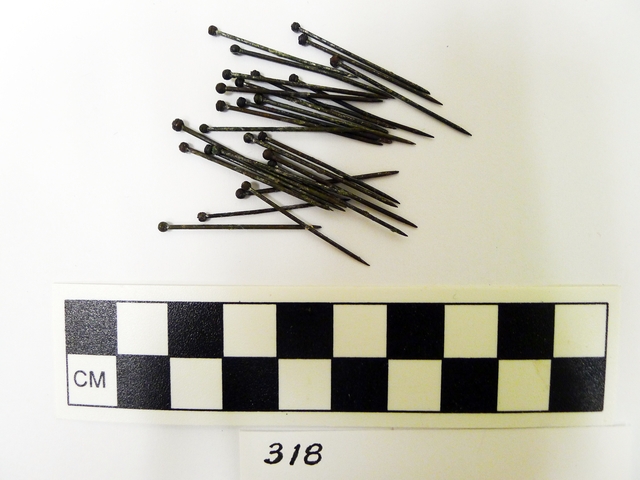- Membership |
- Shop |
- Calendar |
- Donate

Straight pins found in 1971 during excavation of the southeast wall line at Historic Fort Snelling. The excavation trench ran from the South Battery (also known as the Hexagonal Tower) to the officers' latrines. This area was used as a dump and contained a wide variety of artifacts.
The common pin or straight pin made from iron wire or, more commonly, brass wire, dates from the medieval period and later. It wasn’t until the 1840s that straight pins could be mass produced; at that time, most straight pins came from England. The presence of these pins at Fort Snelling demonstrates the fort's participation in a global economic system even when it was one of the westernmost outposts of the United States. Records of the fort's sutler’s store from the 1830s don't mention pins, but they do mention needles and thimbles. These pins have not been dated, but they are made from two pieces of wire, one forming the shank and the other twisted to form the head.